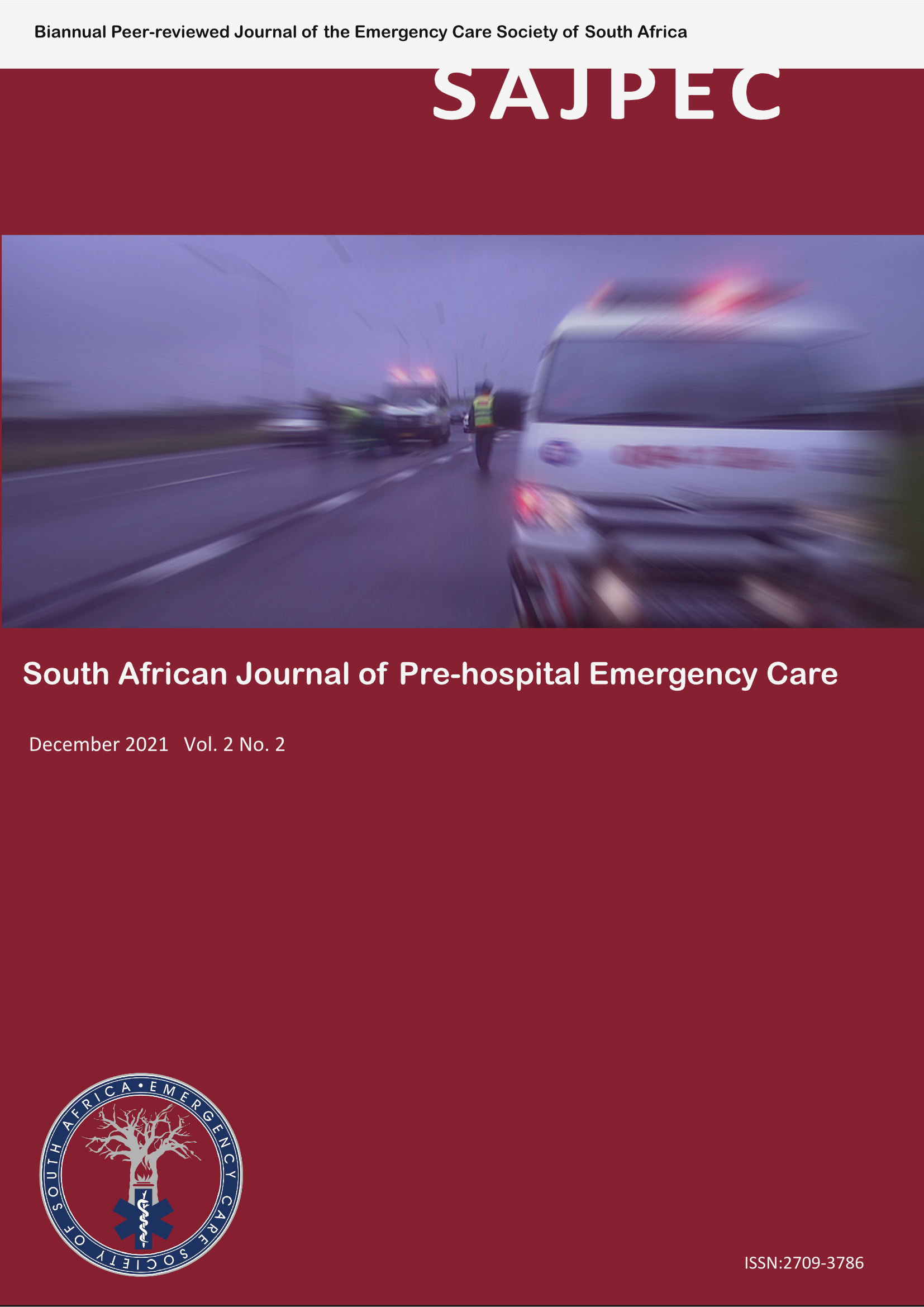The accuracy of Bloemfontein-based Emergency Medical Services providers in recognising sepsis
DOI:
https://doi.org/10.24213/2-2-4265Abstract
Background: Sepsis is considered a severe life-threatening medical emergency and globally carries a high mortality. Research suggests early recognition of sepsis can lead to early initiation of treatment and effective communication of this condition to the receiving facility by pre-hospital emergency care (PEC) providers. Depending on system operations, this has been shown to improve patient outcomes. However, sepsis often presents non-specifically, and in the absence of validated pre-hospital sepsis screening tools, less than half of sepsis patients seen by PEC providers are recognised. This study aimed to determine the accuracy with which Bloemfontein-based PEC providers recognise sepsis in a series of patient vignettes.
Methods: A series of seven case vignettes were presented to a convenient sample of advanced life support (ALS) and intermediate life support (ILS) PEC providers. The PEC providers were asked to review each vignette and indicate whether the patient described had sepsis or not. The vignettes consisted of a clinical case description with signs and symptoms of patients presenting with or without sepsis, and images were shown where relevant. Elements of the Robson Prehospital Severe Sepsis Screening (RPSS) tool were used to populate the sepsis vignettes.
Results: A total of 27 ILS and ALS PEC providers in the Bloemfontein area partook in the research study. Thus, a total of 189 vignettes were evaluated for sepsis. PEC providers, both ILS and ALS, recognised sepsis with a sensitivity of 69.63% and a specificity of 37.04% (PPV 73.44%, NPV 32.79%), indicating an accuracy of 60.32%. Although all participants mentioned some motivations for their answers, none of the participants gave specific cut-off value ranges at which point they would suspect sepsis.
Conclusion: This vignette-based study found that PEC providers can recognise sepsis with modest accuracy, echoing previous work on this topic. In addition, the study provides a platform for similar studies, which, in turn, could aid in the development of a validated, pre-hospital sepsis screening tool.
Downloads
Downloads
Published
Issue
Section
License
Authors grant the Emergency Care Society of South Africa the exclusive right to publish, display, reproduce and/or distribute the work in print and electronic format and in any medium known or hereafter developed, including for commercial use. Authors also agree that the Emergency Care Society of South Africa may retain in print or electronic format more than one copy of the work for the purpose of preservation, security and back-up.


